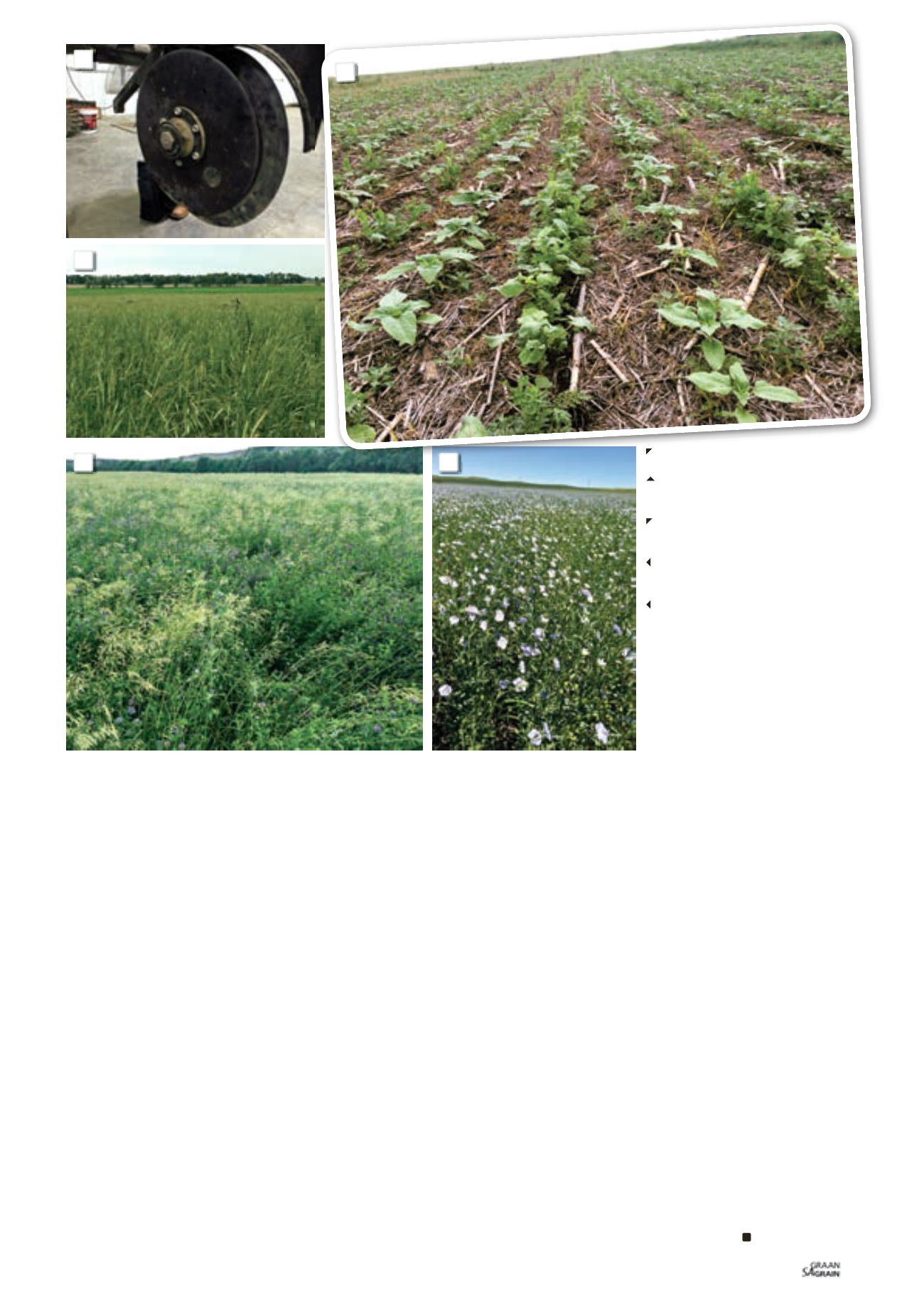

15
December 2014
more beneficial insects and pollinators
→
healthier agro-ecosystems
→
sustained higher yields, quality and diversity of food with less use
of external inputs.
A common practice is to use cover crop “cocktail mixtures” of six to
twelve crops to get to the required diversity; in other words they aim
to mimic or even enhance nature and its diversity (i.e. the prairies).
The major benefit is that diversity speeds up biological time.
Special care or planting methods/equipment should be used to
establish or sow cover crops. The crops may be seeded at the same
time (mixed intercropping) or they may be seeded at different times
(relay intercropping).
Minimising soil disturbance
To minimise soil disturbance, producers in the USA are moving
from single and double discs to “scissor discs”. They are totally
moving away from the disturbance of tine planters which cause a
proliferation of weeds (on the plant row), the loss of soil water and
the disruption of soil structure (with loss of SOM).
Weed management
The best weed control strategy is a good crop canopy, soil cover
and minimal soil disturbance, which results in 97% weed control. In
some cases producers are using glyphosate once every five years.
Integrated crop-livestock systems
The use of integrated crop-livestock systems is quite common,
since it improves nutrient cycling and soil health (if done properly).
A key component is multi-species pastures or cover crops – up to
20 species in rotation with cash crops.
USA producers view standing pasture (foggage) better than hay;
leaving animals on field (e.g. kraaled in crop fields), leaves more
nutrients on land, with a higher C sequestration. It is important to
manage competition for biomass (soil versus animals).
Conclusions and recommendations
The 6th WCCA and the post-conference tour to the USA confirmed
that CA is a truly sustainable agricultural intensification system for
grain producers across the globe, which is environmentally sound
and socio-economically viable.
At the conference, public and civil societies across the world
were encouraged to promote CA through all possible avenues
and opportunities, due to its huge environmental, social and econo-
mic benefits.
The major emphasis to improve the technical performance of the
CA systems was on increased diversity through crops (e.g. through
proper crop rotations and multi-species cover crops) and integration
of livestock (e.g. through ley cropping and cover crops).
The promotion of Innovation Systems to reach and empower
producers through CA, such as on-farm, producer-led research, has
confirmed the strength of the approach taken by Grain SA, supported
by the Maize Trust and the Winter Cereal Trust.
8: “Scissor-discs” to minimise soil
disturbance at planting.
9: Good weed control depends on
a good crop canopy, soil cover and
minimal soil disturbance.
10: If done properly, integration of
livestock can improve the quality of
the CA system.
11: A multi-species pasture is used
with livestock integration to get to the
required diversity.
12: Crop diversity increases beneficial
insects and pollinators.
8
10
11
12
9

















